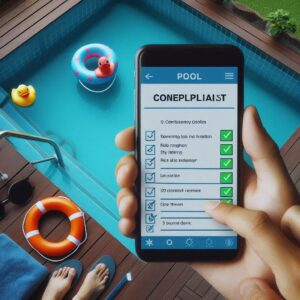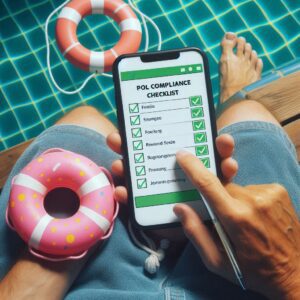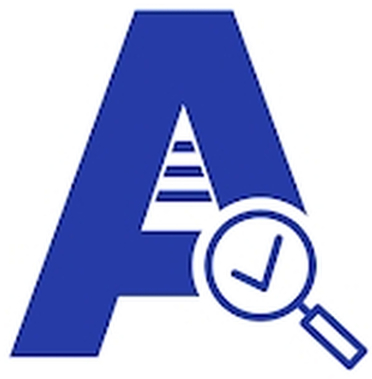Pool Compliance Checklist
Creating a comprehensive Pool Compliance Checklist using eAuditor Audits & Inspections ensures that your pool facility adheres to all relevant safety, health, and operational standards. Below is a detailed checklist structured into key categories that you can implement in eAuditor Audits & Inspections. Each section includes specific items to inspect, ensuring thorough compliance.

Pool Compliance Checklist
1. General Information
- Inspection Date and Time
- Inspector Name
- Pool Location
- Weather Conditions (if applicable)
- License and Certification Validity
2. Safety Signage
- Emergency Contact Information clearly displayed
- Pool Rules visible and legible
- Depth Markers at appropriate intervals
- Warning Signs for hazards (e.g., slippery areas)
- First Aid and AED Location signs present
- No Diving Signs where applicable
3. Pool Area Safety
- Fencing and Barriers meet local regulations (height, gates self-closing and self-latching)
- Locked Pool Gates when not in use
- Non-slip Surfaces around pool deck
- Adequate Lighting for nighttime visibility
- Clear Access to Lifeguard Stations
- No Clutter or tripping hazards around the pool area
4. Water Quality and Chemistry
- pH Levels within 7.2 – 7.8
- Chlorine/Bromine Levels as per guidelines
- Alkalinity and Calcium Hardness within recommended ranges
- Regular Water Testing documented
- Proper Filtration System Operation
- Water Clarity and Turbidity acceptable
- Presence of Cyanuric Acid (for outdoor pools) at appropriate levels
- Shock Treatment performed regularly
5. Pool Equipment
- Pump and Filtration Systems functioning correctly
- Heaters and Temperature Controls operating within set parameters
- Automatic Chlorinators working properly
- Skimmers and Drains clear and unobstructed
- Backwash Procedures followed and documented
- Pool Covers (if used) in good condition
- Ozone/UV Systems (if applicable) maintained
6. Facility Maintenance
- Cleanliness of pool area, including tiles, decks, and surrounding areas
- Maintenance of Restrooms and Showers – clean, stocked with supplies, functional
- Changing Rooms and Lockers in good condition
- Trash Bins available and regularly emptied
- Furniture and Amenities (e.g., lounge chairs, umbrellas) safe and in good condition
- Signage Maintenance – no faded or damaged signs
7. Lifeguard and Staff Training
- Certified Lifeguards on duty as required
- Staff Certifications up to date (e.g., CPR, First Aid)
- Regular Staff Training and drills conducted
- Adequate Staff-to-Guest Ratio
- Emergency Response Procedures clearly understood by staff
- Visible Presence of Lifeguards during operating hours
8. Emergency Equipment
- First Aid Kits fully stocked and accessible
- Automated External Defibrillators (AEDs) available and functional
- Rescue Equipment (e.g., life rings, poles) easily accessible
- Fire Extinguishers present and inspected regularly
- Emergency Communication Devices (e.g., phones, radios) operational
9. Emergency Procedures
- Evacuation Plans posted and known by staff
- Regular Emergency Drills conducted
- Clear Instructions for handling injuries, drownings, and other emergencies
- Coordination with Local Emergency Services
10. Health and Hygiene
- Water Quality Records maintained and accessible
- Proper Showering Facilities before pool use
- Maintenance of Pool Chemistry to prevent illnesses
- Regular Cleaning of Pool Area to prevent mold, bacteria, and pests
- Illness Policy for patrons and staff
11. Documentation and Record-Keeping
- Inspection Logs regularly updated
- Maintenance Records for all equipment
- Training and Certification Records for staff
- Incident Reports filed and reviewed
- Water Testing Results documented daily
12. Compliance with Local Regulations
- Adherence to Local Health Department Standards
- Building and Safety Codes compliance
- Licensing Requirements up to date
- Accessibility Standards (e.g., ADA compliance)
13. Operational Procedures
- Opening and Closing Procedures followed
- Chemical Storage safe and compliant
- Chemical Handling Procedures followed by staff
- Pool Usage Policies enforced (e.g., maximum capacity, hours of operation)
- Maintenance Schedules adhered to


Implementing the Pool Compliance Checklist in eAuditor Audits & Inspections
- Create a New Checklist:
- Open eAuditor Audits & Inspections and select “Create New Checklist.”
- Choose a relevant template or start from scratch.
- Structure the Checklist:
- Organize the checklist into sections as outlined above (e.g., General Information, Safety Signage, etc.).
- Use headings and subheadings for clarity.
- Add Check Items:
- Input each item as a separate checklist point.
- Utilize different question types (e.g., Yes/No, Multiple Choice, Numeric) for appropriate responses.
- Include Media and Notes:
- Allow space for photos, notes, and comments for each item.
- Attach relevant documents or images if necessary.
- Set Up Compliance Rules:
- Define mandatory fields and set up conditional rules as needed.
- Use scoring or grading to assess compliance levels.
- Test and Deploy:
- Run a trial inspection to ensure the checklist functions as intended.
- Make adjustments based on feedback.
- Automate Reporting:
- Configure automatic report generation after each inspection.
- Share reports with relevant stakeholders.
- Regular Updates:
- Update the checklist regularly to reflect changes in regulations or best practices.
Additional Tips
- Customize for Specific Needs: Adapt the checklist to your specific pool type (e.g., residential, commercial, aquatic center) and local regulations.
- Involve Stakeholders: Collaborate with staff to ensure all critical areas are covered.
- Continuous Improvement: Use insights from inspections to improve pool operations and safety continuously.
- Training Integration: Incorporate the checklist into staff training programs to ensure familiarity and compliance.
Example Checklist Template
Here is a simplified version of how the checklist might appear in eAuditor Audits & Inspections:
Section 1: General Information
- Inspection Date: [Date Picker]
- Inspector Name: [Text Field]
- Pool Location: [Text Field]
- License Valid: [Yes/No]
Section 2: Safety Signage
- Emergency Contact Information Displayed: [Yes/No]
- Pool Rules Visible: [Yes/No]
- Depth Markers Present: [Yes/No]
Section 3: Pool Area Safety
- Fencing Meets Height Requirements: [Yes/No]
- Pool Gates Self-Closing and Self-Latching: [Yes/No]
- Non-slip Surfaces Installed: [Yes/No]
…and so on for each section.
Conclusion


Implementing a Pool Compliance Checklist using eAuditor Audits & Inspections helps maintain high safety and operational standards, ensuring a safe and enjoyable environment for all patrons. By following the detailed sections and items outlined above, you can create a robust checklist tailored to your facility’s needs, streamline inspections, and ensure continuous compliance with all relevant regulations.
If you need a more specific template or assistance with setting up the checklist in eAuditor Audits & Inspections, feel free to ask!
